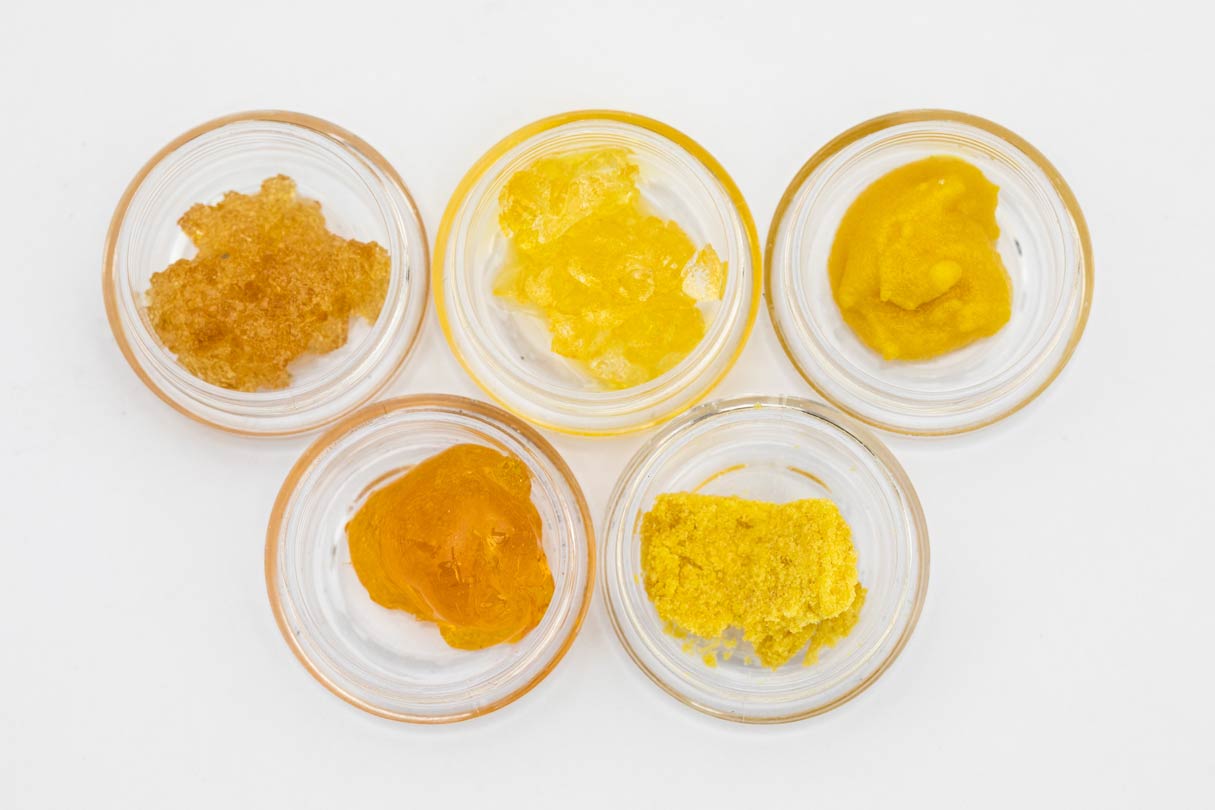
NEW: You can now shop all Lab Society short path distillation products right here on Precision.
How Short Path Distillation Works
Short path distillation gets its name from the short distance that distillate vapor travels in these systems. Typically, the distillate vapor only has to travel a few inches in total.
With a vacuum applied to the total setup, the distillate vapor passes from one flask (or another piece of glassware) to another, which separates and purifies the sample in the process.
A heating mantle heats the substance, which vaporizes your desired end product. These vapors rise up through a distillation head, where they condense and trickle down into one or more collected evaporating flasks.
The simplicity of the system makes it so effective and easy to use.
While the initial sample or compound may have undesirable substances contained within, the resultant output is a highly pure, condensed, final product.
In some cases, a second pass may be desired, but this is usually due to operator error or to a problem occurring with the first pass.
Thanks to the reduced pressure of the vacuum system, the amount of heat necessary to achieve your desired results can be considerably lower than it would otherwise have to be. This is especially useful for sensitive organic compounds which may have adverse reactions (or even combust) at higher temperatures.
Reduced pressure safely lowers the boiling point of your compounds, giving you a pure distillate without damaging your valuable products in the process.
Wiped/Thin Film Distillation Systems vs. Benchtop Distillation Systems:
What’s the difference?
Fractional Distillation is not a new method. In fact, there are numerous methods to separate compounds, and short-path distillation is just one widely accepted way.
Distillation systems are commonly used for the separation of oils, fats, chemicals, fragrances, and other compounds.
Wiped/Thin film distillation and benchtop distillation are the two main types of short path distillation systems being used in the industry today. There are numerous machines and methods for achieving separation of compounds, but this section will focus on benchtop systems, and thin/wiped film systems, and how you can decide which one is right for you.
Wiped/Thin Film evaporators are usually towards the top of a user’s budget, and some systems can cost upwards of one hundred thousand dollars. Benchtop kits, on the other hand, are in the several thousand to low tens of thousands range.
Pros and Cons of Two Popular Fractionation Methods:
Consider production output vs. cost to make a decision.
Production output versus cost is a key factor when considering which system to purchase, and the ability to alter the flow rate of the system is of the utmost importance here. While both systems have adjustable output, only one will gain or lose lab space as you change the output rate.
The removable heads on benchtop systems will also allow them to fit into numerous places around the lab. This allows you to move the unit with ease, and you can (re)set up the kits in varying configurations to increase lab flow.
Which solution is better for lab flow?
Lab flow is very important in a lab, because you want everything to be as efficient as possible. Wiped/thin film setups are usually stationary.
If they are seated on a moving cart, they may only be able to fit in specific places. This can reduce lab flow drastically, especially when you only have a limited space in which the machine can be placed.
Summary: making an informed decision.
During the use of these machines, broken parts can and will happen; Benchtop distillation parts will be considerably cheaper to replace when compared to a wiped/thin film distillation setup. Wiped/thin film systems contain an array of specialized, unique parts, which if broken would be very expensive to fix or maintain.
Benchtop distillation units, on the other hand, employ the use of more economical glassware. Not only are these components less expensive to reproduce, but they also achieve the same end products.
While separation is absolutely possible with both units, you should ask yourself if spending the extra money for the same results is worth it for you and your laboratory. These costs compound when you factor in not only the initial cost but also the cost of annual maintenance and the limited functionality of the equipment.
From our point of view, both solutions are viable, and you should choose based on production capacity and budget. That’s why we carry a variety of both types of distillation systems. To meet the needs of any laboratory or operation.
Why Choose Precision for Distillation?
We supply some of the world’s best distillation equipment, including complete benchtop distillation kits and thin/wiped film systems.
We’re in it for the long run, and we’re here to stay. When you make a purchase from Precision, you’re not only getting best-in-class equipment, you’re also getting world-class technical support. We help our customers long after the sale is made, that’s how we create customers for life. Ask us about our comprehensive training programs, so you and your staff can get educated and up to speed on how best to use our kits and products in your own laboratory.
Shop distillation equipment or schedule your free consultation to find the system that’s right for you.








